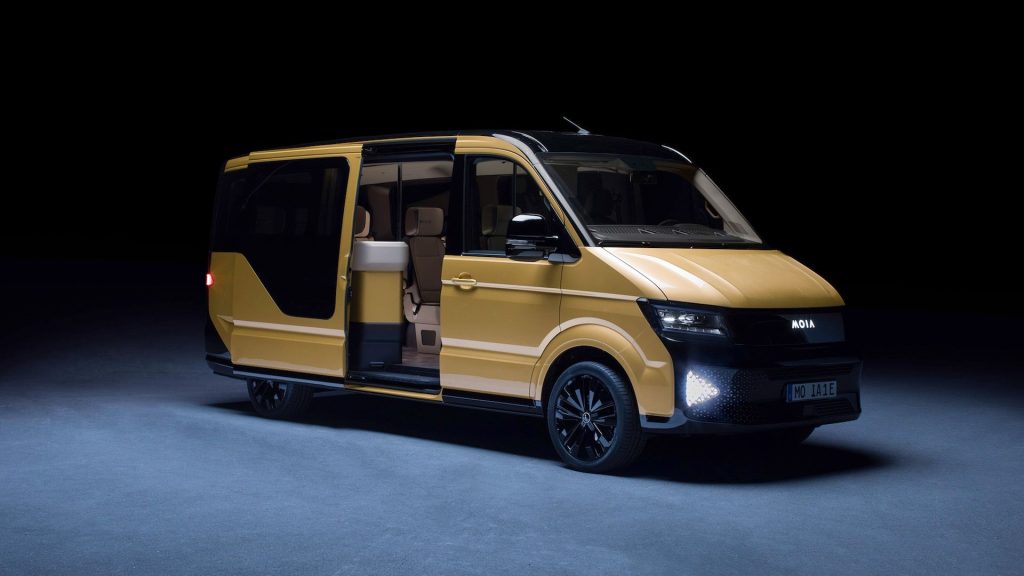

**Volkswagen to Launch Self-Driving ID. Buzz Electric Vehicles on Uber Platform**
In a pivotal advancement toward the future of transportation, Volkswagen has revealed its intention to launch autonomous variants of its fully electric ID. Buzz vehicles on the Uber platform. This partnership signifies a notable achievement in the merging of electric vehicle (EV) innovations and autonomous driving technologies, aiming to provide eco-friendly, driverless ride-hailing services in the near future.
### A Collaborative Venture for Future Mobility
The alliance between Volkswagen and Uber unites two leading companies with synergistic strengths. Volkswagen, recognized as one of the foremost automobile manufacturers globally, has been actively channeling resources into electric and self-driving vehicle technologies. Uber, the leading ride-hailing service worldwide, has consistently aimed to incorporate autonomous vehicles into its platform to enhance efficiency and lower expenses.
The autonomous ID. Buzz models will be crafted by Volkswagen Commercial Vehicles (VWCV), in concert with the Group’s autonomous driving software branch, Cariad, and the mobility services firm MOIA. These vehicles will be outfitted with sophisticated self-driving technology engineered by Mobileye, an expert in autonomous solutions.
### The ID. Buzz: A Contemporary Take on a Timeless Classic
The ID. Buzz represents Volkswagen’s contemporary, electric reimagining of its legendary Microbus. Merging nostalgic design with state-of-the-art EV technology, the ID. Buzz has sparked considerable enthusiasm among consumers. The self-driving variant will utilize the same MEB (Modular Electric Drive Matrix) platform that supports other Volkswagen electric models, ensuring a spacious interior, emissions-free operation, and an adequate range for both urban and suburban travel.
The autonomous ID. Buzz will incorporate an array of sensors, including LiDAR, radar, and cameras, to facilitate Level 4 autonomous driving capabilities. This implies that the vehicle can function without human oversight in specified areas and situations, making it particularly suitable for ride-hailing in urban settings.
### Pilot Programs and Projected Timeline for Deployment
Volkswagen and Uber aim to initiate pilot projects in selected European cities starting in 2025, with Hamburg, Germany, anticipated to be one of the initial sites. MOIA, Volkswagen’s mobility services division, has already been implementing ride-pooling services in Hamburg and will be instrumental in the integration of the autonomous ID. Buzz into Uber’s platform.
These pilot programs will prioritize testing the technology in actual conditions, collecting data, and enhancing user experience. Should they prove successful, the partnership may facilitate a wider deployment of autonomous ride-hailing services throughout Europe and potentially other regions.
### Advantages and Obstacles
The implementation of autonomous electric vehicles on ride-hailing platforms presents numerous potential advantages:
– **Eco-Friendliness**: Electric vehicles generate zero tailpipe emissions, aiding in cleaner air and diminished greenhouse gas emissions.
– **Optimization**: Autonomous vehicles can fine-tune routes, alleviate traffic congestion, and run continuously without the necessity for breaks.
– **Inclusivity**: Driverless vehicles can facilitate mobility for individuals unable to drive, including the elderly and those with disabilities.
Nevertheless, the introduction of autonomous vehicles also poses several challenges:
– **Regulatory Compliance**: Autonomous vehicles must adhere to strict safety and regulatory requirements that differ across countries and regions.
– **Public Trust**: Earning the confidence of passengers and the general populace is essential for broad acceptance.
– **Technical Challenges**: Guaranteeing the dependability and safety of autonomous systems within complex urban settings remains a substantial engineering undertaking.
### A Sneak Peek into the Future
The Volkswagen-Uber partnership embodies an ambitious vision for the future of urban transportation—one that is electric, autonomous, and collaborative. As cities worldwide confront traffic jams, pollution, and the necessity for more sustainable transit options, autonomous electric ride-hailing services could present a persuasive solution.
While the path to fully autonomous mobility is still under construction, efforts like this illustrate that the future may be closer than it initially appeared. With ongoing investment, innovation, and collaboration, autonomous electric vehicles such as the ID. Buzz might soon become commonplace on urban streets—transforming the way we travel from one location to another.






